
[ad_1]
Two years ago I started making my own natural insect repellent spray and anti bug balm for our family. After getting tired of staring at all the many not-so-great-for-you bug sprays at the store and trying to find one that didn’t contain harmful ingredients, I gave up! Making your own homemade bug spray and DIY bug balm is actually a lot simpler than you might think. I’m gonna share my family bug balm recipe with you here. I bet you will love this shea butter mosquito repellent recipe- it works great!
You might be asking, “What is bug balm?” It’s a solid form of bug repellent. Just think if your bug spray was in a solid form that you could rub on, kinda like a lotion or a deodorant stick. That’s bug balm! It seems to coat and cover our skin better. Then we use repellent spray to spray things like the outdoor area and our clothing. The bugs here are bad, especially the mosquitoes!
All Natural Bug Balm Recipe
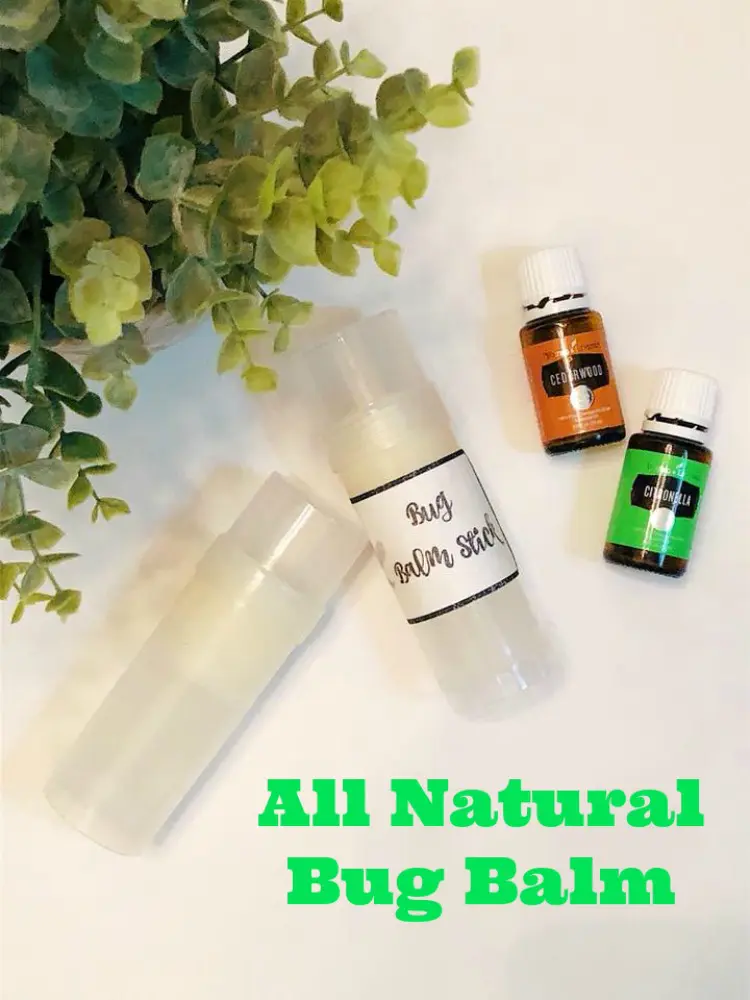
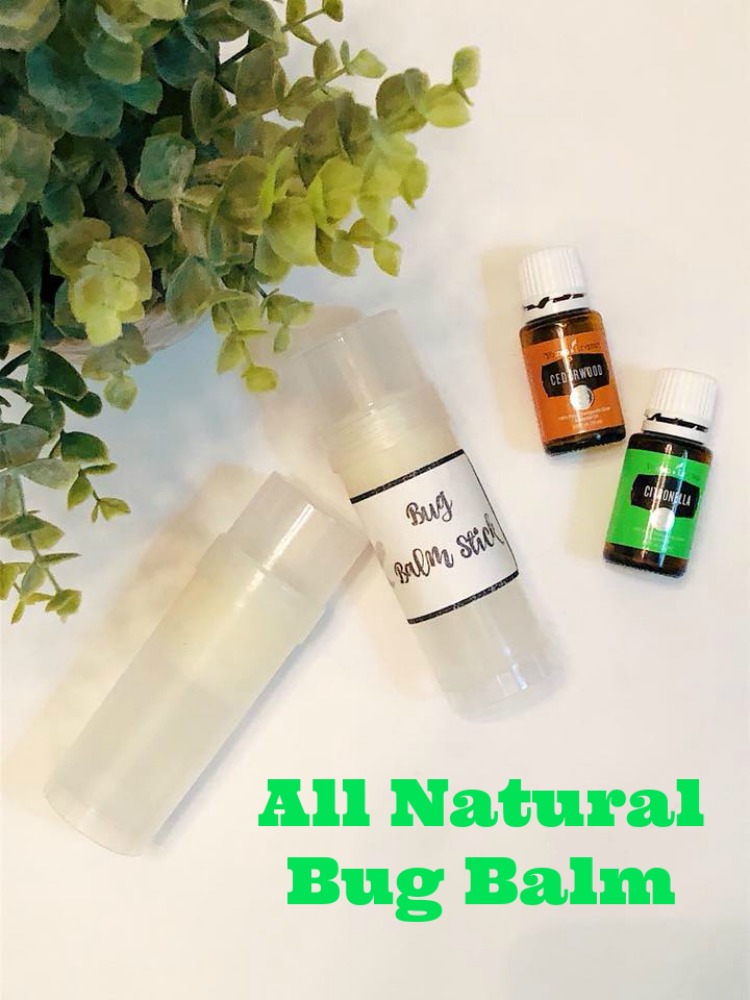
While some commercial bug sprays can have strong, unpleasant odors, a homemade bug balm can be made to smell nice while still effectively repelling insects.
Ingredients/Supplies Needed for your All Natural Bug Repellent Salve Recipe:
- Coconut Oil (may substitute sweet almond oil)
- Shea Butter
- White Beeswax
- Empty Deodorant Container (my affiliate Amazon link)
- Young Living Citronella Essential Oil
- Cedarwood Essential Oil (Tea Tree Oil is another effective oil against bug bites if you are looking for a substitution)
- Young Living Patchouli Essential Oil
- Measuring cup/Tablespoon
I am a Young Living distributor for high quality, pure essential oils, if you’d like to order from me.
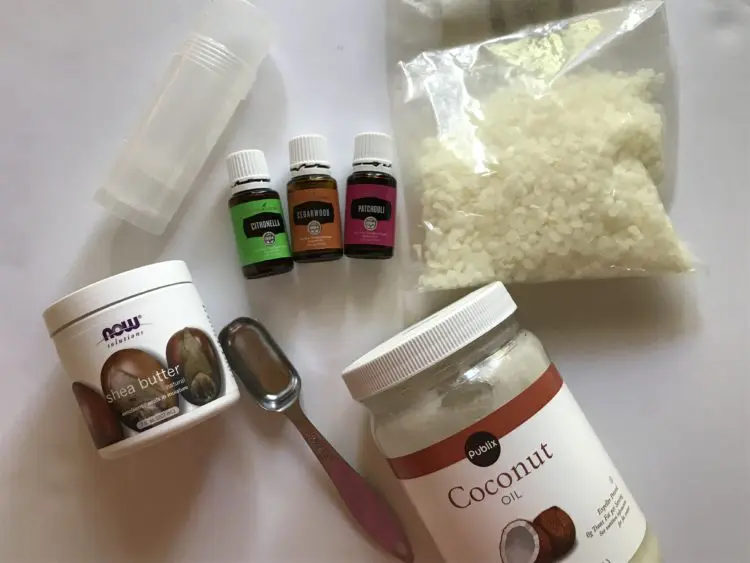
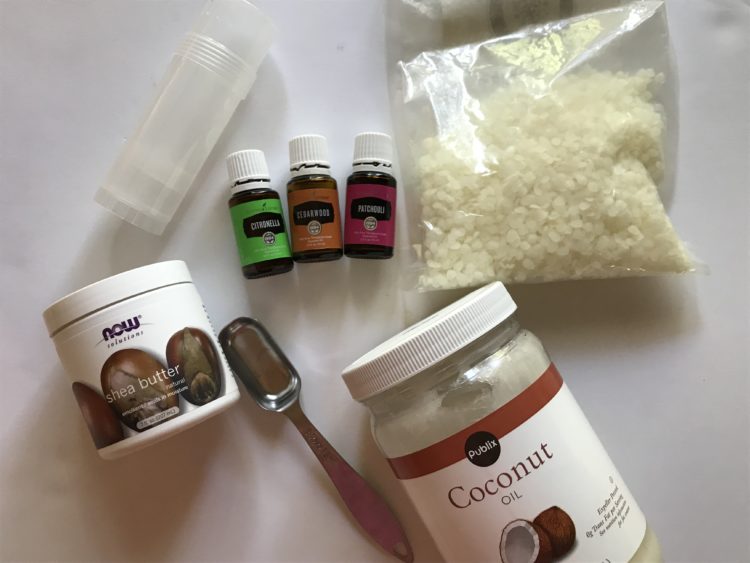
How To Make All Bug Repellent Balm:
Start by gathering your supplies and head to the kitchen. First, grab a small pan and fill with water about 3-4 inches or half a cup. Place on stove and turn on high heat. Take a pyrex glass measuring cup or mason jar and place in water. These are heat safe and can act like a makeshift double boiler. Into your measuring cup add 3 TBSP of beeswax, 3 TBSP of coconut oil and 1 TBSP of shea butter. Stir frequently until everything is completely melted. Your beeswax will take the longest to melt. It will take anywhere from 5-7 minutes. Just keep stirring!
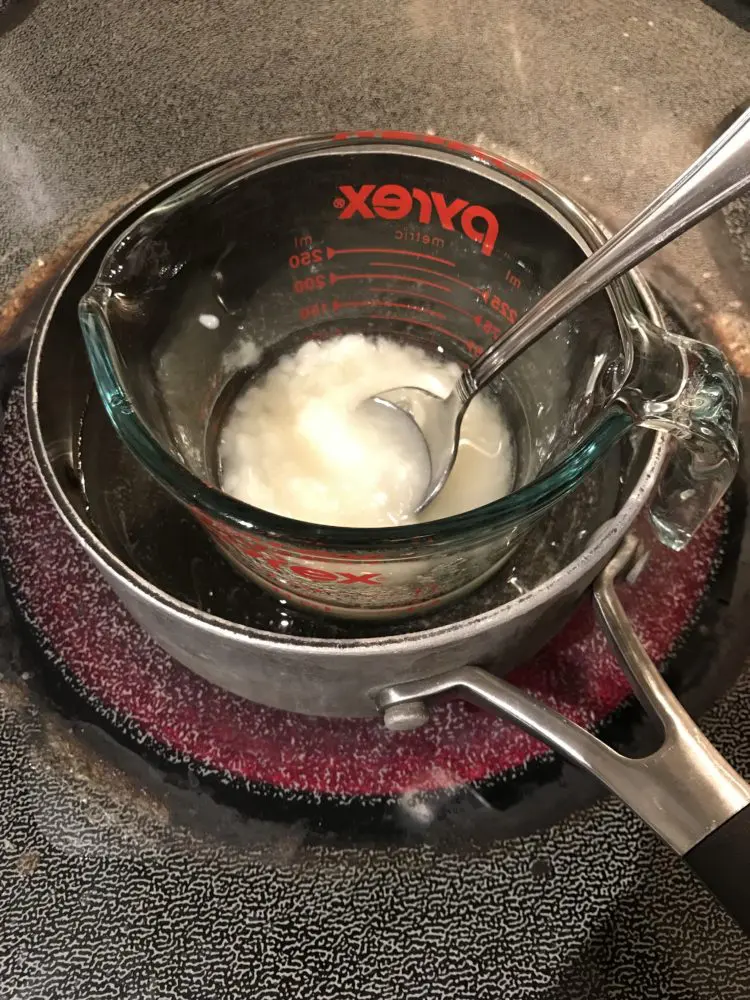

Once those ingredients are all melted, carefully turn off heat and remove the glass measuring cup and place on a safe surface. The measuring cup will be EXTREMELY HOT, so be careful.
Make sure to use an oven mitt to remove from pan. Let the melted mixture sit for about 60 seconds before adding the natural bug repellent essential oils. Add 20 drops of each essential oil and give a quick stir.
Next, careful pour the mixture into your empty deodorant containers. This recipe will fill up 3 containers (each container is 2.2oz).
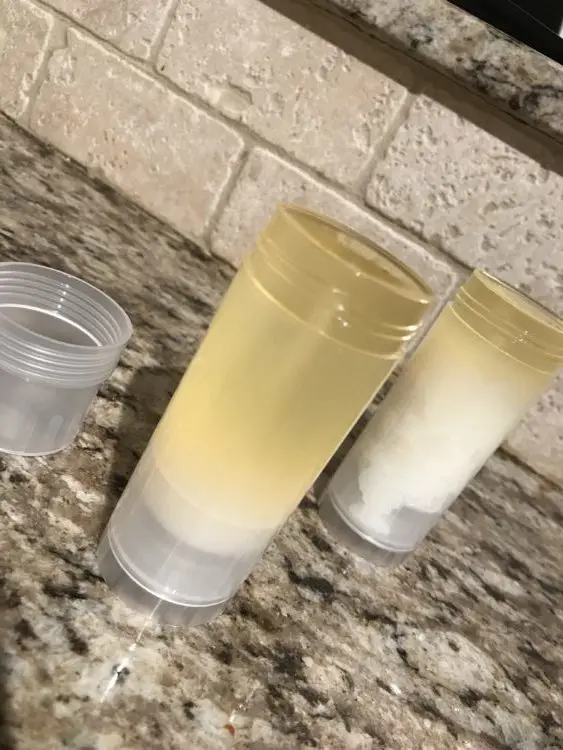
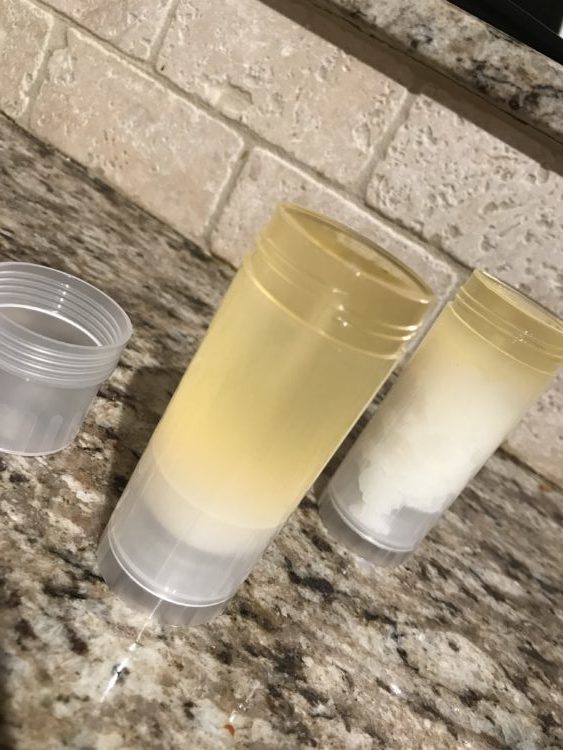
Once you have filled each container up, let them cool for an hour. When they’re cooled, they will harden and you are ready to use.
How To Use DIY Bug Balm:
Just rub on your skin avoiding any sensitive areas like your eyes. Focus on the areas that will be most exposed like your ankles. It sort of melts onto your warm skin and then you can rub in with your hands. If this is your first time using it test on a small patch of skin first to make sure you have no essential oil sensitivity. This bug repellent is for topical application only.
We keep one in the car for unexpected stops at the park. I also keep a bug balm in my purse and by the door so the kids can always play outside without letting a few bugs stand in their way!
Bug Repellent Balm Recipe Conclusion
Making bug balm can be beneficial for several reasons:
- Natural Ingredients: Homemade bug balm allows you to use natural ingredients like essential oils (e.g., citronella, eucalyptus, lavender) that are known to repel insects. This is a safer option for those who want to avoid chemical-laden commercial products.
- Customization: You can customize the DIY bug balm to suit your needs, whether it’s for a specific type of insect or for sensitive skin. You can adjust the concentration of essential oils or add other ingredients like coconut oil, beeswax, or shea butter to enhance its moisturizing properties.
- Cost-Effective: Making your own bug balm can be more economical in the long run, especially if you already have the ingredients on hand. It often costs less than buying store-bought repellents.
- Environmentally Friendly: Homemade balms usually come with less packaging waste and are made with eco-friendly ingredients, reducing your environmental footprint.
- Gentle on Skin: Commercial bug repellents can sometimes cause skin irritation, especially for people with sensitive skin or allergies. A bug balm recipe allows you to control the ingredients, ensuring it’s gentle and suitable for all family members.
Making your own bug balm can be a satisfying and practical way to protect yourself and your family from insects naturally. Do you enjoy trying DIY essential oils recipes? Do you think you will try this bug balm recipe and make your own natural repellent? My family and I love to make our own homemade skin care products. Let us know what you think @familyfocusblog
Related Posts:
DIY Essential Oils Calming Cream Recipe For Relaxation
Top Natural Healing Remedies You Will Want To Know
Moisturizing DIY Lip Balm Tutorial
[ad_2]